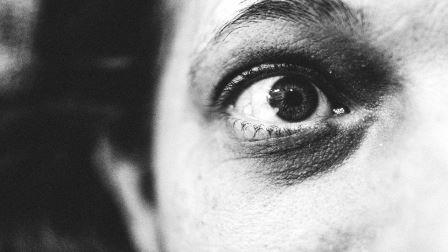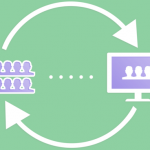Here’s How To Trick Your Brain Into Making Smarter Mistakes
Let’s play a game. It’s called “Who’s Your Ancestor?”
Imagine it’s about 200,000 years ago: Two people are sitting around a watering hole, both freshly branched onto the new evolutionary path of modern humans. Suddenly, they hear a twig snap behind them. One of them jumps up, eyes wide, ears tuned, muscles tensed. The other one stretches their legs and says, “It’s probably nothing.”
So, who’s your ancestor?
Why It’s Good That Things Seem Bad, Risky, And Threatening
Probably not the chilled-out one. All of us are descended from early humans who had a bias toward noticing the negative. It’s one of the things that keeps us all alive. Missing the cues for something you can eat, like an apple, isn’t that big a deal. But missing the signal that something is going to eat you—that’s a problem of existential proportions.
And so your amygdala, the fire alarm of your brain, devotes two-thirds of its neurons to scanning for negatives. We notice angry faces more quickly and easily than happy faces. Pain teaches us faster than pleasure.
When we notice something negative, our hippocampus lays the memory down almost immediately. But guess how long you have to hold something positive in your awareness in order to have it laid down as a memory? That takes 12 full seconds. As psychologist Rick Hansen has said, the “brain is like Velcro for negative experiences but Teflon for positive ones.”
So we are primed to notice our mistakes—notice our boss is upset with us, notice our audience is bored, notice that tone of disapproval in our parent’s voice. These act as trip-wires in our brains and make us less rational, less creative, less productive, and less happy. From an evolutionary point of view, what got us here—our negativity bias—won’t get us there, wherever it is we’re trying to go with our personal and professional lives.
How To Handle The Bad Stuff Better
So what is there to do?
Well, you can’t stop yourself from noticing the negative. But you can change how you view it. This is called “cognitive reappraisal.”
Let’s say you’re giving a presentation and you make a mistake. You could say to yourself, “I messed up, I suck, this always happens, it’s just like fifth grade.” Or you could reappraise. You could remind yourself that Frank Sinatra would carefully mess up his shirt collar before stepping on stage. Sam Walton (the founder of Walmart) would purposefully drop his notes on his way to the lectern. You’re in good company; mistakes can be a good thing.
The reason this works is because the brain’s first reaction to new concepts is to accept them as valid; disbelief takes a split second longer than belief. While your brain is hardwired for negativity, it’s also primed for ingenuousness. And in that short cognitive interval, you may have moved on already.
When you make a mistake, if you tell yourself, “Mistakes are okay, Frank Sinatra made them on purpose,” your brain will believe that just long enough for you to regain your momentum. As disbelief hurries to catch up, you’ve continued on with the presentation.
No One Minds Your Slip-Ups As Much As You Do
Here’s another way to reappraise a mistake. We know from countless studies that people listen with their emotional selves as much as (if not more than) their rational selves. In order to be heard, we need both to have good information and have people feel good about us. We need to be liked. And mistakes pose a prime opportunity for you to boost your likability.
After all, the reason Frank Sinatra messed up his collar and Sam Walton dropped his notes was to make themselves more relatable to audiences. The audience liked them more for their mistakes, not less. When you make a mistake, use it as a way to connect with people. Not only will people who catch you messing up be more likely to like you for it, they’ll also be more inclined to agree with your ideas.
In fact, you can even practice by purposefully planting a mistake in your next presentation. When you come to it, own it. Say something like, “Whoops. That’s not supposed to be there.” And move on.
One last thing: Remember how we said that in order to lay down a positive memory, you have to hold it in your awareness for 12 seconds? That’s an extremely long time by neurological standards—but it’s also long enough for you to consciously intervene.
So practice doing that: The next time you find a parking spot quickly, or just make the train, or give a great presentation (with one mistake), pull out your phone, hit the stopwatch, and focus on that good thing for 12 seconds. It’ll make you that much more resilient the next time you screw up.
Judah Pollack is the coauthor of The Chaos Imperative, and Olivia Fox Cabane is the author of The Charisma Myth.
Fast Company , Read Full Story
(8)













